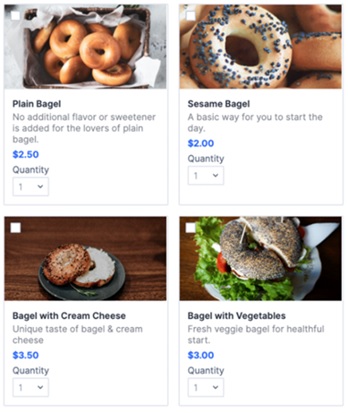The economic fallout from COVID-19 has been challenging for businesses of all sizes across every industry, but it’s especially tough on small businesses. A recent survey by the Chamber of Commerce and MetLife found that one in five small businesses were two months or less away from permanent closure while one in three have had to close temporarily.
At the same time, the response to these challenges by small businesses has been incredibly creative. Distilleries nationwide are making hand sanitizer to help their local communities. One survey of entrepreneurs found that nearly half had come up with new ways to respond directly to COVID-19-related customer needs, and more than half changed their business model to adapt.
One key adaption that helps small businesses stay profitable during the pandemic is to shift more operations online. The use of online forms has skyrocketed as business owners look for alternatives to paper forms and in-person encounters. After the danger passes, it’s likely many small business owners will stick with their online forms strategy — they’re finding it works better than old processes.
Sophisticated Ordering and Transaction Forms: No Coding Experience Necessary
When public health officials ordered shutdowns and encouraged people to stay home, big corporations had an advantage because most already had digital interfaces for customer interactions in place. Many smaller companies had to start from scratch or rapidly upgrade their digital capabilities, and it has been amazing and inspiring to see how they’ve used online forms to adapt.
To cite one example, mom and pop restaurants and bakeries are now using online forms with payment integration capabilities to streamline takeout and delivery orders and collect payment up front. There are affordable online forms available that enable small businesses to easily set up a branded payment form on their site that can process transactions securely — all without writing a single line of code.
In addition to restaurants, family-run farms and farmers’ markets have set up online forms that allow customers to select, purchase and pay for fruit, vegetables and artisanal products. Other farm and produce businesses have set up subscription forms customers can use to receive special member boxes containing select products on a regular basis and/or to order bulk purchases of produce.
Creative Use of Forms in the Healthcare and Service Sectors
The use of online forms has exploded in the healthcare sector too as therapists, doctors, dentists and other healthcare professionals adapt to the COVID-19 economy. Some clinicians are seeing patients online, delivering services via telemedicine technology, while others are collecting patient information and accepting payment remotely to minimize contact during in-person appointments.
Technology adoption at clinical offices lagged behind other types of businesses even before the pandemic, but lockdowns have forced more providers to adapt. Now that they’re using secure forms to collect patient information and process payments, chances are the offices will keep these options even after a vaccine becomes available. It’s a more efficient way to work.
Online Forms Best Practices and Tips for Small Businesses
One of the best features of modern online forms is their ease of use — you don’t have to be a technical expert to set them up. If you’re looking for ways to incorporate online forms into your small business website, make sure you choose a solution that allows you to brand the forms. Seeing your familiar brand on payment, ordering and service request forms will reassure customers and build trust.
The best online form options make it easy to embed forms on your site without IT support — just copy and paste the code, and your form should work seamlessly. As for code placement on your site, it’s important to make it easy for customers to find the form, and try to minimize the amount of scrolling customers have to do to find the items they want to purchase.
An online form that allows you to use columns to display multiple items and upload photos to entice customers to order can work well for a small business:
 Also keep in mind that many people browse online using mobile devices, so make sure the form solution you choose works on mobile platforms. It’s a good idea to test your online form using various devices (tablet, phone, etc.) and operating systems (Android, iOS) to ensure a great customer experience.
Also keep in mind that many people browse online using mobile devices, so make sure the form solution you choose works on mobile platforms. It’s a good idea to test your online form using various devices (tablet, phone, etc.) and operating systems (Android, iOS) to ensure a great customer experience.
The pandemic has been incredibly challenging for small businesses of all types, but with determination and creativity, many companies are finding ways to not only survive during uncertain times but to thrive. Online forms can be a part of the solution for your small business. By digitizing customer interfaces and delivering a seamless experience, you may find a better way of working that outlasts the pandemic.
Chad Reid,is the Vice President of Marketing and Communications at JotForm.







